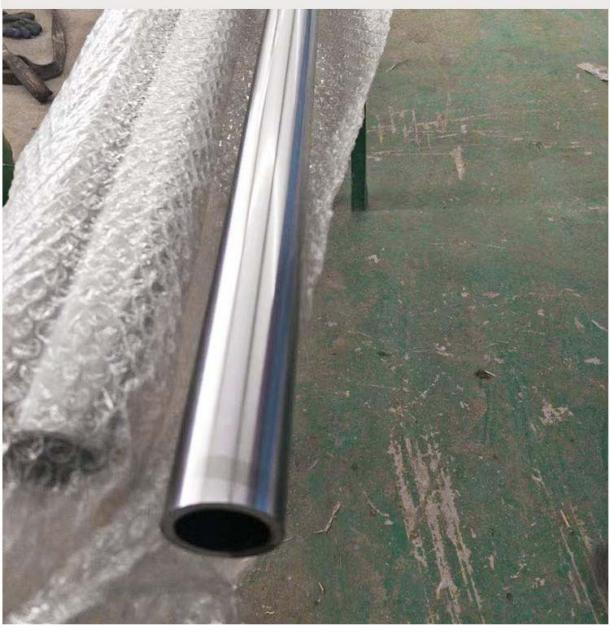Cold drawn steel pipe is a type of steel pipe, which is classified according to different production processes and is different from hot-rolled (expanded) pipes. It is formed through multiple passes of cold drawing during the process of expanding the blank or raw material tube, usually carried out on a single chain or double chain cold drawing machine of 0.5-100T. In addition to general steel pipes, low and medium pressure boiler steel pipes, high-pressure boiler steel pipes, alloy steel pipes, stainless steel pipes, petroleum cracking pipes, mechanical processing pipes, thick wall pipes, small diameter and internal mold other steel pipes, cold rolled (rolled) steel pipes also include carbon thin-walled steel pipes, alloy thin-walled steel pipes, stainless thin-walled steel pipes, and special-shaped steel pipes. Cold drawn steel pipes can have an outer diameter of up to 6mm, a wall thickness of up to 0.25mm, and thin-walled pipes can have an outer diameter of up to 5mm with a wall thickness less than 0.25mm. The accuracy and surface quality are significantly better than hot-rolled (expanded) pipes, but due to process constraints, their diameter and length are limited to some extent.
The original high-frequency quenching only uniformly heated cold drawn steel pipes, but now it has been changed to a direct electrification quenching method, which directly applies high-frequency current to the heated object and generates resistance heating. Due to proximity effect and skin effect, the surface current density is high, resulting in sufficient heating and quenching of the tooth surface.
The quenching area has developed from the original only on the tooth surface, through the tooth surface and back surface, to the tooth surface, back surface, and shaft part. The back and tooth surfaces are quenched by direct electrification, while the shaft is still quenched by moving.
However, when the tooth surface and back surface are treated in two stages, in addition to direct electrification, there is also a quenching method of using a circular heating coil to move the heated object while simultaneously heating the tooth surface and back surface (sometimes extending to the shaft). This method does not require a compression device, has lower equipment costs, and the heating coil is not affected by circular teeth and other parts, so it can be shared. However, due to the difficulty in fully quenching the bottom of the tooth surface, it has not yet been promoted. In order to solve the above problems, a method of quenching the tooth surface and back of cold drawn steel pipes in one go has been developed.
Under static state, the cylindrical conductor is energized for a set time to induce heating on the tooth surface and back surface. Due to its similarity to the shape of the tooth surface and back, each part can be evenly heated; Due to the rotation of the heated object, an induced current is generated when passing through the lower part of the cylindrical conductor, causing the side to be heated, thereby heating the cold-drawn steel pipe as a whole and cooling it for overall quenching (if it is not cooled after rotary heating, only the tooth surface and back surface are quenched). The thermal effect during fire is on a part of the previously quenched part (usually the back side) When the hardness decreases and the shaft is quenched three times, it is necessary to make heating coils suitable for various treatment purposes to significantly improve the performance of the steel pipe.
Post time: Aug-08-2023


